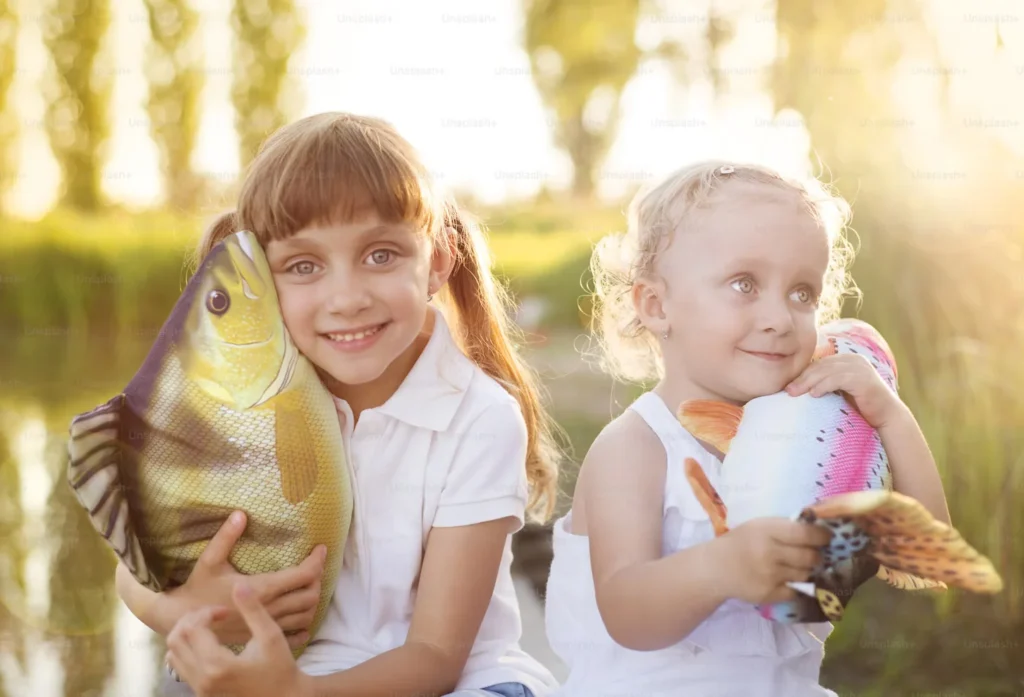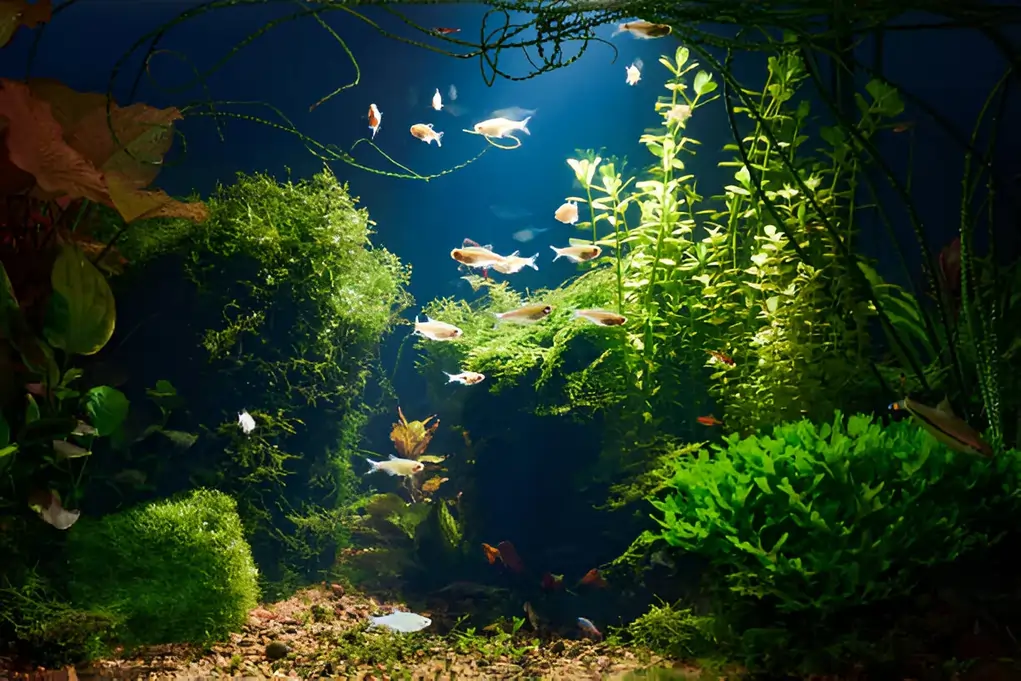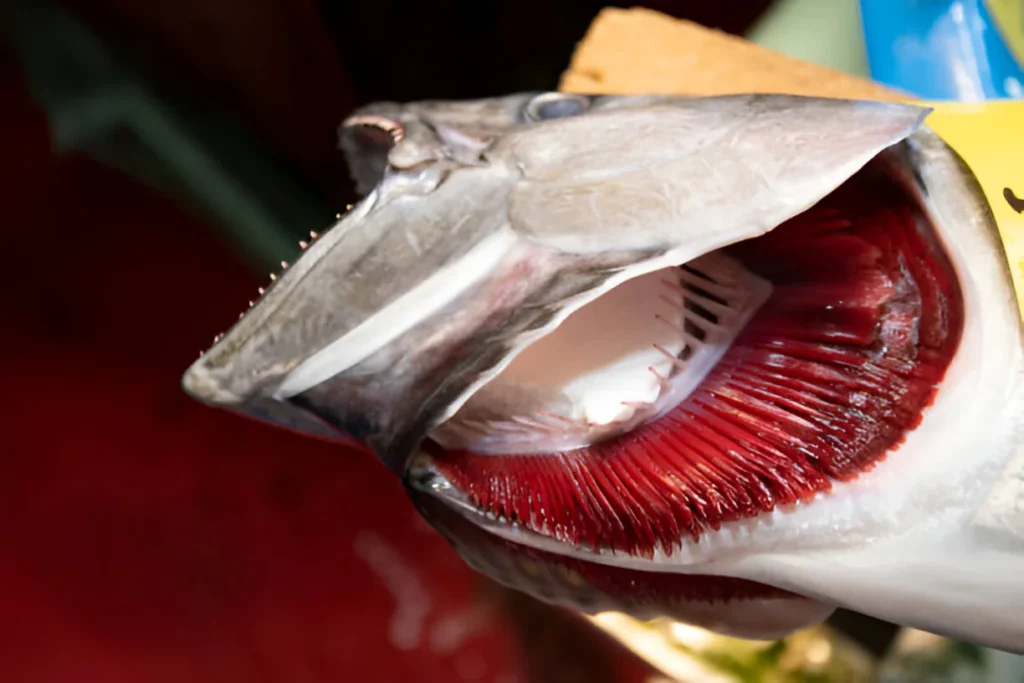Teaching kids about caring for fish can be an incredibly rewarding experience. It develops a sense of responsibility, encourages empathy towards animals, and introduces them to the fascinating world of aquatic life. However, it’s essential to make this learning process fun, engaging, and age-appropriate. Through careful guidance, kids can not only enjoy the companionship of fish but also learn valuable life skills.
Why Teaching Kids About Fish Care is Important
One of the primary benefits of teaching kids about caring for fish is that it promotes responsibility. Taking care of a fish requires regular feeding, cleaning, and attention to the health. When children understand the importance of these tasks, they begin to understand the concept of dependability. They realize that living creatures depend on them for survival.

Additionally, fish care can teach kids patience and persistence. Fish tanks require upkeep, and the work doesn’t always yield immediate rewards. It’s a gradual process, but through steady dedication, children will see the impact of their efforts—whether it’s in maintaining a clean tank or observing the health and happiness of their fish.
Finally, understanding the biology of fish and their habitat introduces kids to scientific principles. Concepts such as water chemistry, filtration, and ecosystems become much more accessible through the hands-on experience of fish care. It can spark a lifelong interest in biology, environmental science, or even marine conservation.
Choosing the Right Fish for Kids
Before introducing kids to fish care, it’s important to choose the right small aquarium fish species. Not all fish are suitable for beginners, and some require more attention than others. Choosing hardy, easy-to-care-for species can prevent early frustrations and set kids up for success.
Some great beginner fish include:
- Betta Fish: Known for their vibrant colors and personality, Betta fish are a popular choice for kids. They thrive in smaller tanks and require minimal equipment.
- Goldfish: Although often considered low-maintenance, goldfish do need a spacious tank and a proper filtration system to thrive.
- Guppies: These small, colorful fish are low-maintenance and can live in community tanks, making them a good choice for a starter aquarium.
- Tetras: Small, peaceful, and social, tetras are another excellent option for children looking to start their fish-keeping journey.
By selecting fish that are relatively easy to care for, you’ll help build your child’s confidence and interest in fish care.
Setting Up a Child-Friendly Aquarium
Once you’ve selected the fish, the next step is setting up the aquarium. This is an exciting part of the process for kids, as it gives them a chance to take ownership of their pet’s environment. Here’s how you can make it fun and educational:
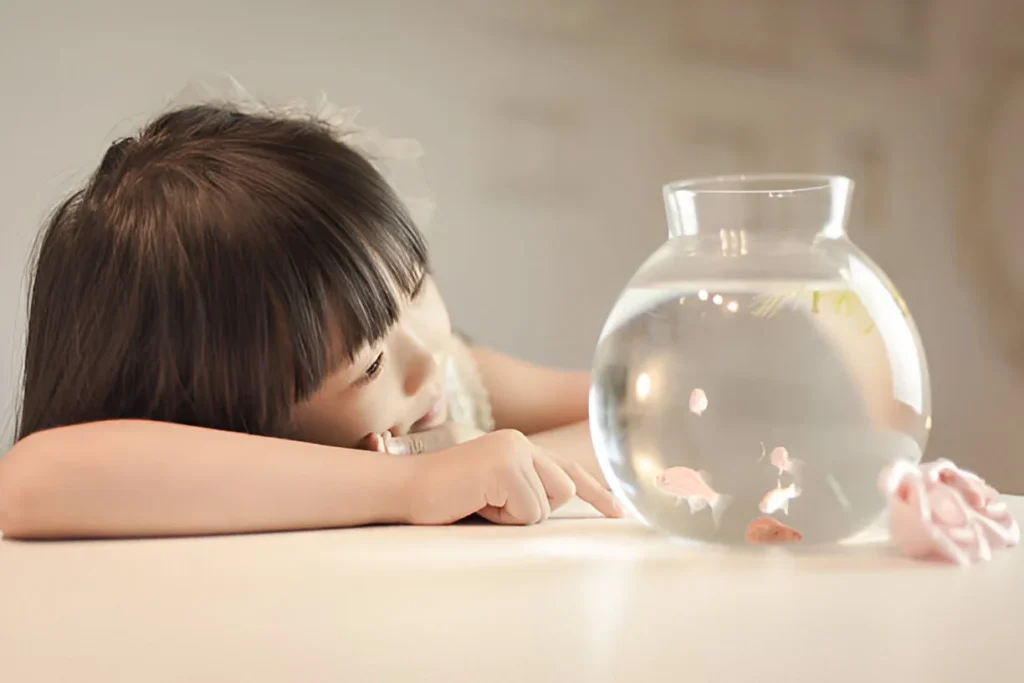
1. Choose the Right Tank Size
A common mistake is opting for a small tank because it seems more manageable. However, larger tanks are often easier to maintain because they provide a more stable environment for fish. A 10-gallon tank is a good starting point for beginners.
2. Decorate the Tank Together
Allow your child to pick out decorations for the tank, like plants, rocks, and hiding places. Explain how these additions create a more natural and comfortable environment for the fish.
3. Teach About Equipment
Explain the purpose of the tank’s equipment—such as filters, heaters, and lights—in simple terms. For example, describe the filter as the fish’s “vacuum cleaner,” keeping the water clean, and the heater as their “blanket,” ensuring they stay warm.
4. Introduce the Nitrogen Cycle
While this concept may be complex for younger children, it’s still valuable to explain in simplified terms. You can talk about how fish produce waste, and how beneficial bacteria in the tank help break down that waste to keep the water safe.
Teaching Kids to Feed Fish Responsibly
Feeding fish may seem straightforward, but it’s one of the most important aspects of care that kids need to learn. Overfeeding is a common mistake among beginners, and it can lead to poor water quality and health issues for the fish. Here’s how to teach responsible feeding:
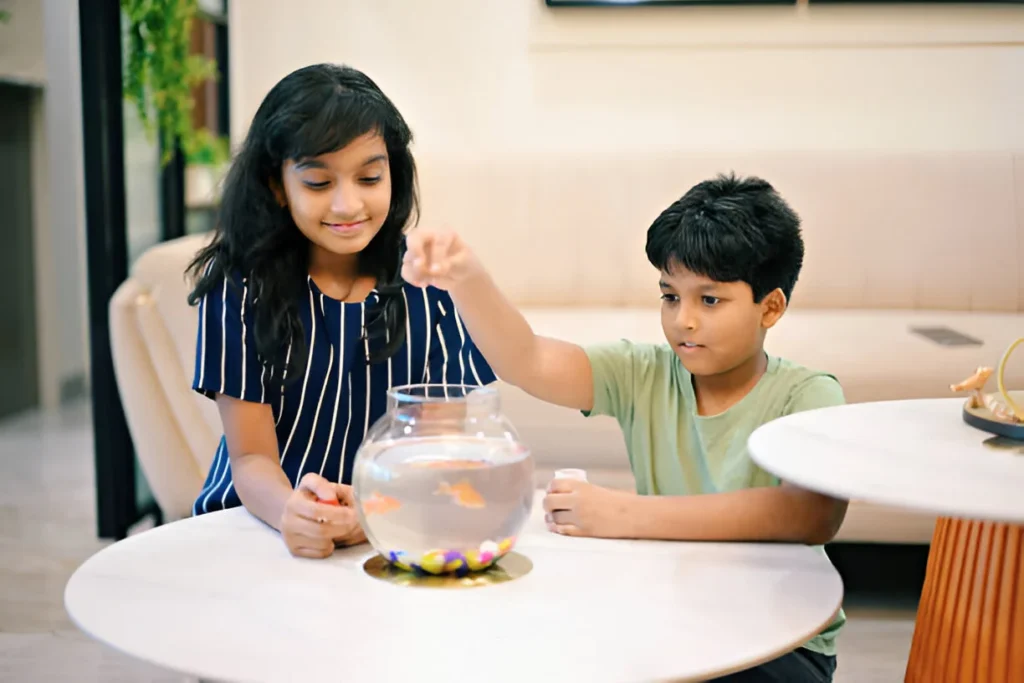
- Portion Control: It shows how much food is appropriate for the fish. Use the rule of thumb that fish should only be fed what they can consume in two to three minutes.
- Feed on a Schedule: Create a feeding schedule that kids can follow. You can even make a chart that they can tick off once they’ve fed the fish. This routine helps kids develop a sense of responsibility and keeps the fish healthy.
- Teach About Variety: Explain that fish, like humans, need a balanced diet. If appropriate for the species, introduce a variety of foods such as flakes, pellets, and frozen or live foods. This can also serve as a fun science lesson about what fish eat in the wild.
Maintaining the Aquarium
Teaching kids to maintain the aquarium is a great way to put long-term responsibility. Kids need to learn that caring for a fish isn’t a one-time activity but an ongoing commitment. Here’s how to involve them in maintenance:
- Water Changes: Explain the importance of regular water changes and let your child help with the process. You can make this fun by using a siphon to show how water is removed from the tank. Be sure to explain that water changes keep the environment healthy for the fish by removing toxins.
- Tank Cleaning: Teach your child how to gently clean algae off the glass and decorations without disturbing the fish. You can use algae scrapers or magnets to make it easier for them to participate.
- Filter Maintenance: Depending on the type of filter, show your child how to check and clean it. Make sure they understand that the filter is crucial for keeping the water clean and the fish healthy.
Encouraging Observation and Interaction
Caring for fish goes beyond feeding and cleaning. Encourage your child to observe their fish daily. Observing fish can help detect signs of illness early on and can be an engaging activity for kids.
- Teach About Fish Behavior
Explain how different species of fish have unique behaviors and personalities. Encourage your child to watch for patterns in how their fish swim, eat, and interact with their environment. This can develop their observation skills and deepen their bond with the pet.
- Identify Signs of a Healthy Fish
Teach your child to recognize what a healthy fish looks like. Clear eyes, smooth swimming, and vibrant colors are all signs of good health. If a fish is sluggish or not eating, it may be a sign of illness, and you can use this as a teaching moment about pet care and when to seek help.
- Document Fish Growth
Kids can keep a fish journal, noting changes in size, color, or behavior over time. This makes fish care more interactive and provides a sense of accomplishment as they witness their fish growing and thriving under their care.
Introducing Kids to the Science of Fish Care
Fish care is a fantastic gateway into science education. From biology to chemistry, there are numerous lessons to be learned from maintaining an aquarium.
- Explain the Fish Life Cycle: Depending on the species, you can teach your child about the fish life cycle. If you have a species like guppies that breed easily, your child may even get to witness the birth of baby fish, adding an exciting and educational element to fish care.
- Water Chemistry: While this may sound complicated, it can be simplified for kids. Introduce them to concepts like pH, ammonia, and nitrate levels, and how these affect the fish’s health. You can use water testing kits as a fun experiment where they get to “test” the water, much like a scientist.
- Ecosystems and Balance: Teaching about the aquarium as a mini-ecosystem helps kids understand the interconnectedness of life. You can explain how fish, plants, bacteria, and the environment work together to create a balanced habitat.
Common Mistakes to Avoid When Teaching Kids About Fish Care
It’s normal for beginners to make mistakes when learning to care for fish. However, by being aware of these common disadvantages, you can guide your child to avoid them:
- Overfeeding: As mentioned earlier, overfeeding can lead to a host of issues, from water quality problems to health issues for the fish. It’s essential to emphasize portion control.
- Neglecting Water Changes: Some beginners might not realize how important regular water changes are. Make it a habit to involve your child in this process to ensure the tank stays clean and healthy.
- Choosing the Wrong Fish: Not all fish are suitable for beginners. Make sure to research fish species thoroughly and choose those that are hardy and easy to care for.
How to Keep Kids Engaged in Fish Care
Children’s interests can sometimes wane, especially when the novelty of a new pet wears off. Here are some ways to keep them engaged:
- Incorporate Fun Learning Activities: Create educational games or activities, such as quizzes about fish species, drawing their fish, or creating stories about their pet.
- Give Them Ownership: Let them be in charge of certain aspects of the fish’s care, whether it’s feeding or decorating the tank. Giving them a sense of ownership will keep them invested in the process.
- Rotate Tasks: If the daily routine of feeding and cleaning becomes monotonous, consider rotating tasks. One day they can focus on feeding, the next on observation, and another on water changes. Variety keeps things fresh and exciting.
Benefits of Fish Care for Children’s Development
Caring for fish isn’t just about teaching responsibility; it can also have broader benefits for a child’s development. These include:
- Emotional Development:
- Building empathy for animals can strengthen emotional intelligence and compassion in children.
- Routine and Structure: Fish care provides daily and weekly routines that help develop time management and planning skills.
- Cognitive Skills: Learning about fish biology, water chemistry, and ecosystems enhances a child’s cognitive development and understanding of the natural world.
Conclusion
Teaching kids about caring for fish is not only an educational experience but also a fun and rewarding one. By making the process engaging, hands-on, and age-appropriate, children can learn valuable lessons in responsibility, science, and empathy. Whether it’s feeding their fish, maintaining the aquarium, or simply observing their aquatic friends, kids will develop a deep appreciation for these unique pets. With guidance, patience, and the right approach, fish care can be a memorable and impactful part of a child’s life.
